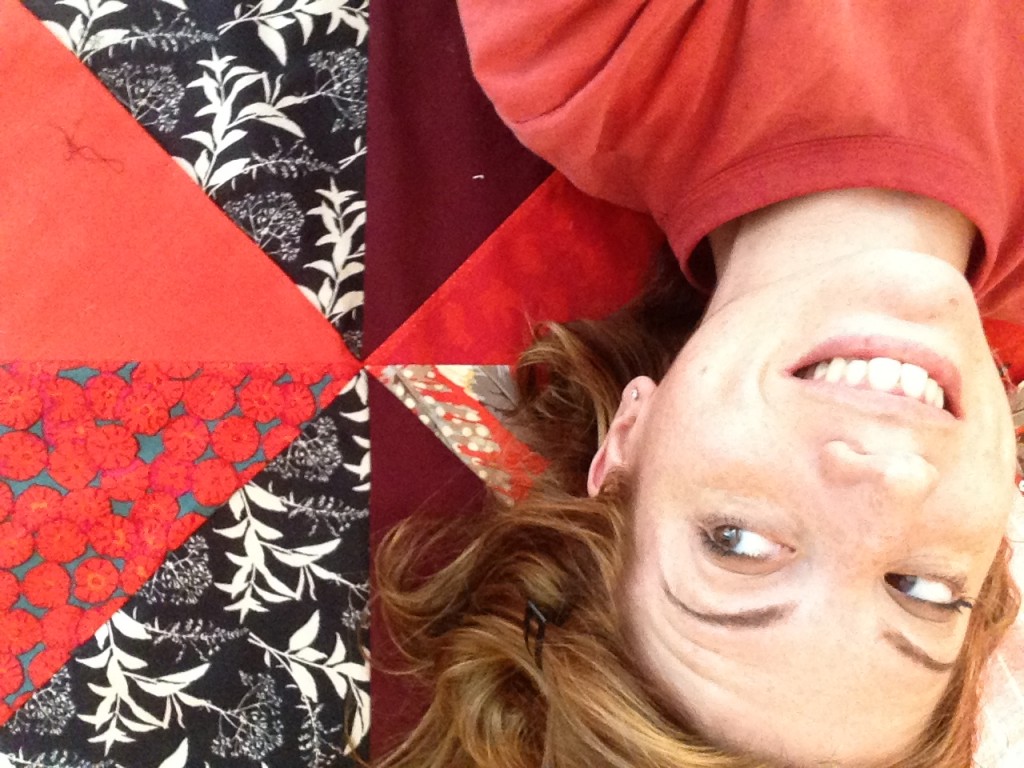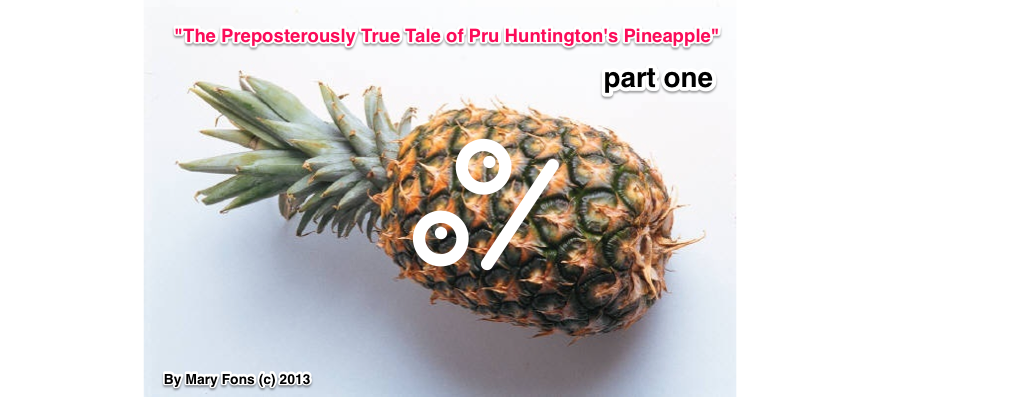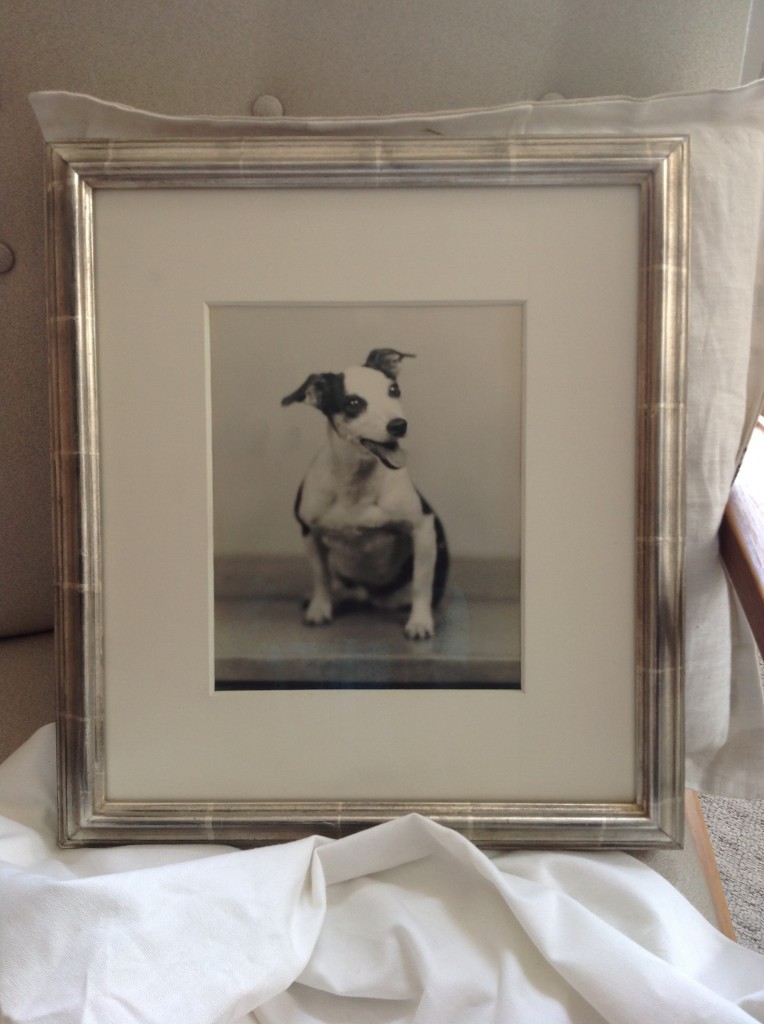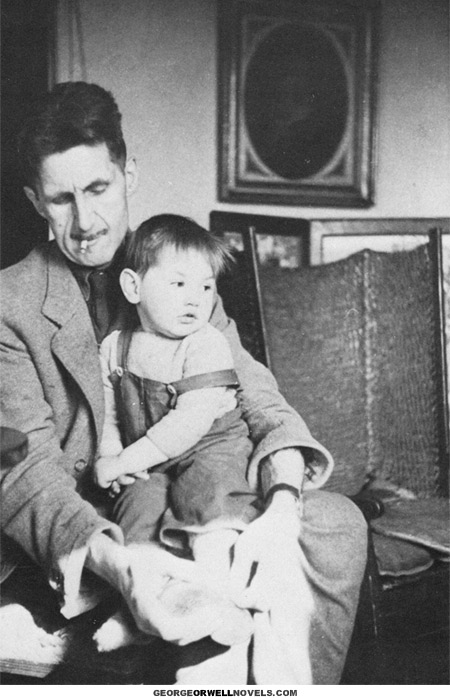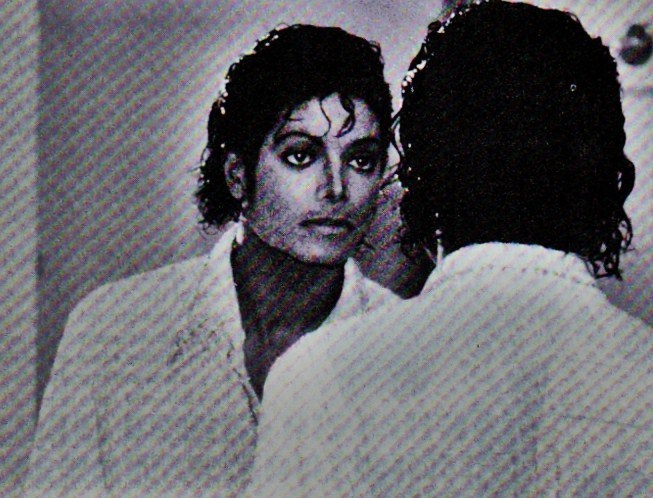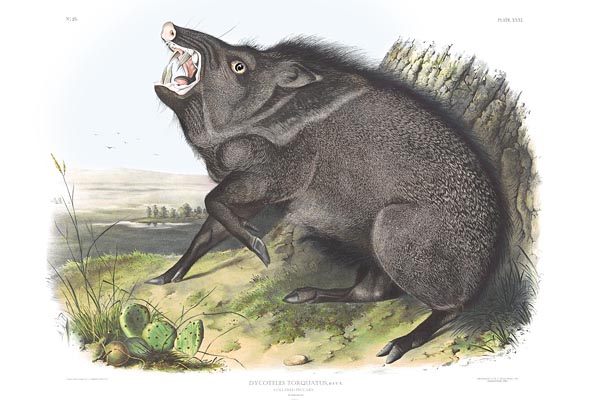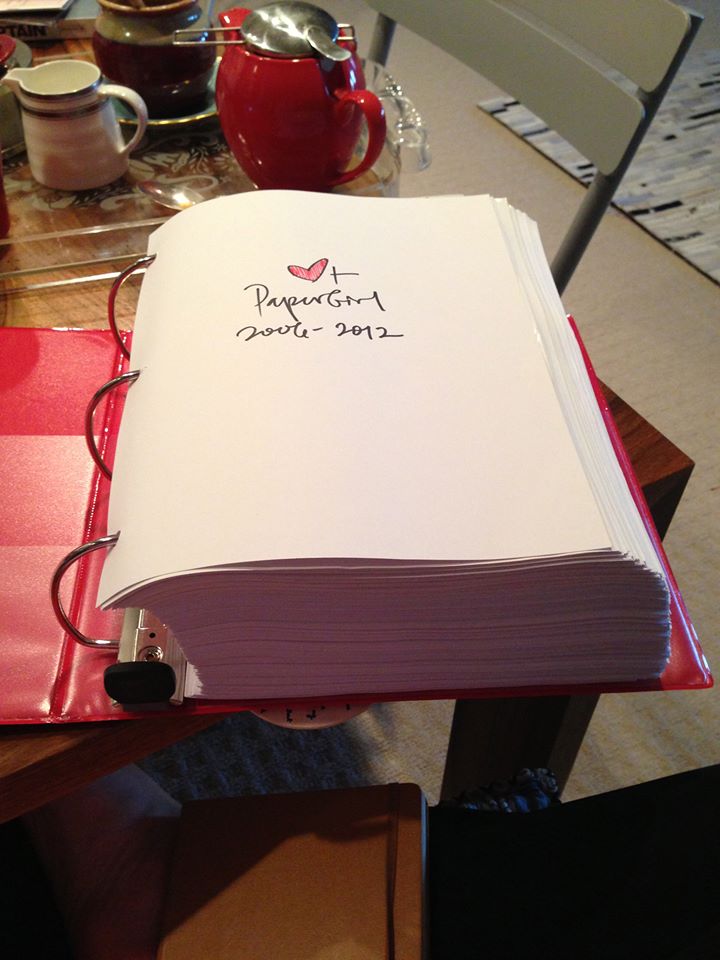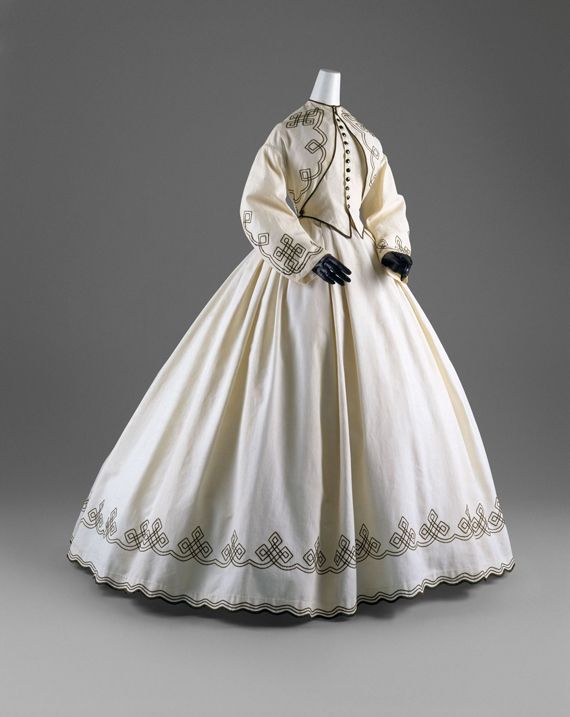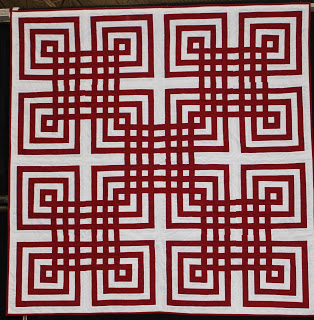This post is for my quilters. My homies.
I whipped up a baby quilt top for the magazine to show in a Quilty magazine tutorial. “Whipped up” is a kind way to put it. “Threw it together on my way out the door” is a better way to put it. And I made some errors. No, really. Look:


I taped it up in a box, mailed it to Iowa. A week or so later, I got this email from the Quilty managing editor, whom I adore:
“Hi Mary — We were getting ready for photography, and we noticed there were several places in the baby quilt top that you sent us that the seams don’t match up. While we are not trying to be the quilt police, we thought it was important to address this. We need to do very detailed shots of the quilt top and we can’t photograph it without showing the places that are not aligning. I can send it back to you if you are going to use it, just let me know.”
Oh yeah.
Here are a few things I think we can all take from this course of events.
1. Quilty (and all Fons & Porter titles) have high standards.
2. Just because you’ve made a passel of quilts, it doesn’t mean you don’t make mistakes.
3. Slow down, cowgirl.
4. COWGIRL! I SAID SLOW DOWN!
5. Be kind to yourself.
6. Were you drinking?
I’d like to expand on #5 for a moment. When this happened, I had a mini-meltdown. It wasn’t a crying, kicking, screaming meltdown, I just had a horrified look on my face, silently wept for about 3 minutes, and felt like an utter and complete failure. Too much? Well, considering it was my birthday and considering the fact that I teach quilting on national television, I think I reacted appropriately.
But after that, I couldn’t let it go of how dumb I felt. That seam? That’s like, really off. It wasn’t the only one. And I didn’t even notice. Sure, I had ninety things to do, but so does everyone else, and besides: I had that particular thing to do and I didn’t do it too well, did I? I felt like a sham. I felt like a fraud.
Several days later, when I was still hearing the word “fraud” in my head over and over, I finally did stop myself and say, “Self, this has gone on long enough. ‘Fraud’? No. Hasty? Absolutely. In need of some perspective? Without question.” It wasn’t an immediate turnaround, but over the course of the next few days, the stung subsided, mostly because I vowed to be nice to myself.
This post is not about vindicating my rejected baby quilt top. It absolutely should have been rejected. This post about vindicating yours.
I’m a writer/editor working in the quilt industry: I see a lot of quilts. I see quilts with problems, both in terms of workmanship and design. I see quilts that are technically flawless but utterly lack soul. I see quilts that would never make it onto the pages of a quilt magazine in a thousand years because frankly, they’re quilts only a mother (or a child) could want. These quilts are all made for a reason. Sometimes that reason is for fame and fortune, sometimes it’s for fun, and the majority of the time, it’s for love.
Look, I read the blogs. I watch the tempests swirl about modern vs. traditional, this sewlebrity vs. that one, the fans vs. the naysayers of the latest trend, latest winningest quilt. I most definitely see people going back and forth about technique. You’d think it was their very soul at stake, sometimes, and all anyone said was “squaring off.”
Release yourself.
If you’re going for publication or a job-job in the quilt industry, yes, you need to bring an A-game. But regardless of whether that’s a goal of yours, take the pressure off of yourself to be all things to all people, all the time. Maybe you’re more of a designer, not a blue-ribbon winner. Maybe every fabric combination you choose looks like the dog’s vomit, but MAN are you a crackerjack machine quilter. Can’t turn a binding that doesn’t look like it was chewed by your toddler? Well, fine, but your knack for solving Susie’s (and Joan’s and Polly’s) contrast problems make you the #1 go-to for such things while everyone else is scratching their heads.
Learn the craft. It’s more fun when you know how to do stuff well. Smart quilters say that again and again. I say it. But for heaven’s sake, be nice to yourself. I spent far, far too many hours in the dumps because I made one mistake and of course, I can’t make mistakes. Ever. Lemme tell you, learning to sew on national television was not easy and I thought I could weather any storm after that, but apparently, I can still be felled. And if the editor of a national quilting magazine can be rejected from time to time, you better not feel too bad about it, either, L’il Miss.
By the way, I just finished my latest top. 🙂
Love,
Mar
